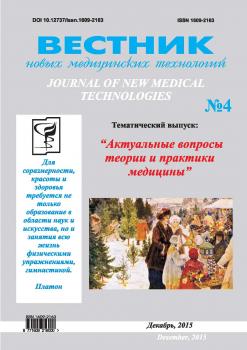The authors have identified priority units – target neuroprotective therapy aimed at restoring the ratio NO/glutathione restored. For this purpose, animals with acute cerebral blood flow (stroke) were injected modulator selenium-dependent glutathione peroxidase medicament "Selenaza" in various doses. In the experiment, the authors used the model of bilateral occlusion of the common carotid arteries – by type of ischemic stroke to Wistar rats. It has been shown that the administration of different dosages "Selenaza" significantly reduces stress marker nitrosating stress - nitrotyrosine, improves the reduced glutathione and glutathione peroxidase enzyme, modifies thiol-disulfide equilibrium in the direction of its reduced forms. According to effect – dose dependence, the concentrations of sodium selenite were calculated ED50 drug "Selenaza", it was 50 ug/ml. Conclusions: These results suggest that selenium protects neurons against hypoxic/ischemic damage by reducing oxidative stress, restoring mitochondrial functional activities, as well as increase levels of reduced glutathione and glutathione peroxidase and reduce markers of nitrosating stress- nitrotyrosine.
cerebral ischemia, nitrosating stress, neuroprotection, Sodium selenite, ED50
1. Ratsional´naya neyroprotektsiya / Belenichev I.F., Cherniy V.I., Kolesnik Yu.M. [i dr.]. Donetsk, 2009. 262 s.
2. Buy Tkhi min´ Tkhu. Farmakologicheskaya kharakteristika selensoderzhashchikh soedineniy (obzor). Razrabotka, issledovanie i marketing novoy farmatsevticheskoy produktsii. 2007. Vyp. 62. S. 448-450.
3. Gomazkov O.A. Neyrokhimiya ishemicheskikh i vozrastnykh patologiy mozga. M., 2003. 200 s.
4. Gantsgorn E.V., Khloponin D.P., Maklyakov Yu.S. Patofiziologicheskie osnovy sovremennoy farma-koterapii ostroy ishemii golovnogo mozga. Mesto-nootropov i antioksidantov v neyroprotektsii. Meditsinskiy vestnik Yuga Rossii. 2013. № 2. C. 4-12.
5. Doklinicheskoe izuchenie spetsificheskoy ak-tivnosti potentsial´nykh neyroprotektivnykh pre-paratov. Metodicheskie rekomendatsii / Chekman I.S., Gubskiy Yu.I., Belenichev I.F. [i dr.]. Kiev, 2010. 81 s.
6. Isaykin A.I. Patogeneticheskie aspekty te-rapii ishemicheskogo insul´ta. Trudnyy patsient. 2010. T. 8. № 4. S. 27-30.
7. Kireev S.S., Larchenko V.I. Tserebral´naya ge-modinamika i vozmozhnosti ee optimizatsii pri kriticheskikh sostoyaniyakh u novorozhdennykh v uslovi-yakh otdeleniya reanimatsii. Neonatologiya, khirurgiya ta perinatal´na meditsina. 2011. T. 1. № 2. S. 51-55.
8. Lutskiy M.A., Frolov V.M., Bocharnikova N.M. Nekotorye osobennosti etiologii i patogeneza ishemicheskogo insul´ta. Sistemnyy analiz i upravlenie v biomeditsinskikh sistemakh. 2011. T. 10. № 3. S. 652-655.
9. Odinak M.M., Yanishevskiy S.N., Tsygan N.V., Golokhvastov S.Yu., Voznyuk I.A.. Sovremennye voz-mozhnosti terapii mozgovogo insul´ta. V pritsele - neyroprotektsiya. Obozrenie psikhiatrii i meditsinskoy psikhologii. 2012. № 4. S. 98-102.
10. Orlova A.S. Somaticheskie rasstroystva i svobodnoradikal´nye protsessy pri tserebrovasku-lyarnoy bolezni. Fundamental´nye issledovaniya. 2012. №8. S. 220-224.
11. Rumyantseva S.A., Afanas´ev V.V., Silina E.V. Patofiziologicheskaya osnova kompleksnoy neyro-protektsii pri ishemii mozga. Zhurnal nevrologii i psikhiatrii im. S.S. Korsako¬va. 2009. №3. S. 64-68.
12. Silina E.V., Rumyantseva S.A., Bolevich S.B. Zakonomernosti techeniya svobodnoradikal´nykh protsessov i prognoz ishemicheskogo i gemorragicheskogo insul´ta. Zhurnal nevrologii i psikhiatrii im. S.S. Korsakova. Insul´t. 2011. №12. S. 36-42.
13. Shan´ko Yu.G., Tanin A.L., Naled´ko A.N., Griga T.N., Vasilevich E.N. Sovremennye predstav-leniya o mekhanizmakh patogeneza povrezhdeniy mozga i neyroprotektornoy terapii. ARS MEDICA. 2009. № 3 (13). S. 97-105.
14. Ekspressiya vaskuloendotelial´nogo fakto-ra rosta i kharakteristika endoteliotsitov sosudov golovnogo mozga zhivotnykh s tserebral´noy ishemiey: Farmakologicheskie effekty novogo metabolitropnogo preparata Liziniy / Kolesnik Yu.M., Belenichev I.F., Mazur I.A., Abramov A.V. [i dr.]. Patologiya. 2011. T. 8. №2. S.89-95.
15. Aldwin Suryo Rahmanto and Michael J. Davies Selenium-containing Amino Acids as Direct and Indi-rect Antioxidants. Life. 2012. 64(11). R. 863-871.
16. Smith E.E., Pan W., Olson D., Reeves M.J., Ov-biagele B., Peterson E.D., Fonarow G.C., Schwamm L.H. Frequency and determinants of lipid testing in ischemic stroke and transient ischemic attack: findings from get with the guidelines-stroke. Stroke. 2010. Vol. 41 (2). P. 232-238.
17. Suresh L Mehta, Santosh Kumari, Natalia Men-delev and P Andy Li* Selenium preserves mitochondrial function,stimulates mitochondrial biogenesis, and reduces infarct volume after focal cerebral ischemia / Mehta et al.. BMC Neuroscience. 2012. 13. R. 79. DOI:https://doi.org/10.1186/1471-2202-13-79.
18. Xiangjia Zhu,1 Kun Guo,2 Yi Lu1Selenium ef-fectively inhibits 1,2-dihydroxynaphthalene-induced apoptosis in human lens epithelial cells through activa-tion of PI3-K/Akt pathway// Molecular Vision. 2011. 17. P. 2019-2027.





